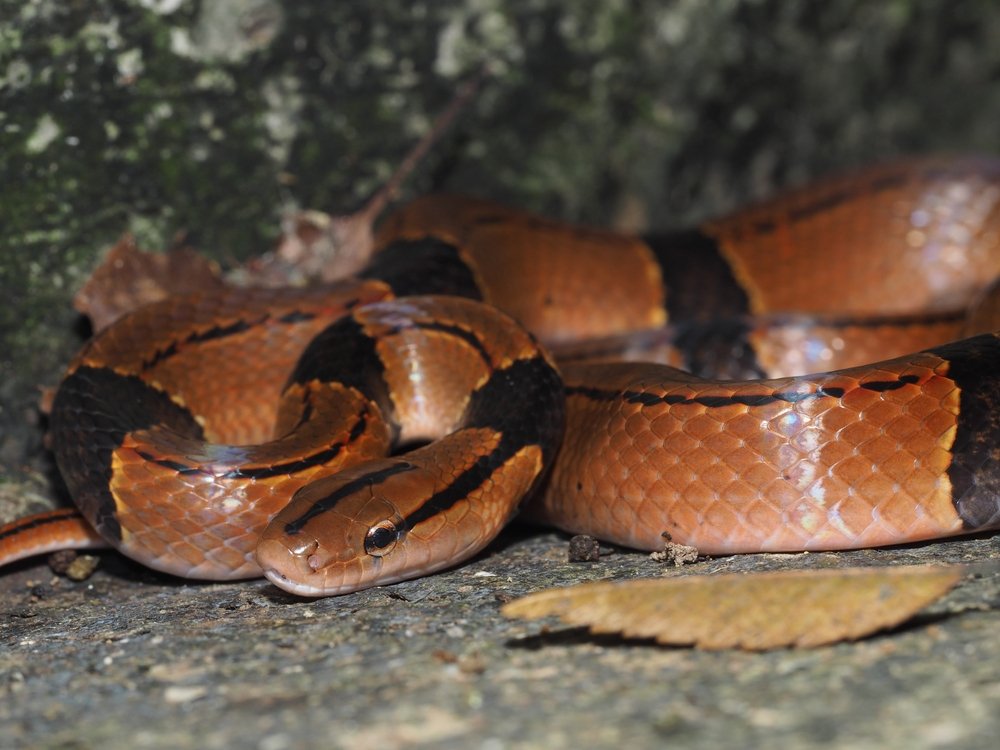Oreocryptophis p. pulchra
The Yunnan Rat Snake (Oreocryptophis p. pulchra) originates from the tropical mountains of South China. It belongs to the Oreocryptophis genus, commonly referred to as ‘red bamboo snakes’ and is comprised of six distinct subspecies that inhabit a broader range of East and Southeast Asia.
The Yunnan subspecies inhabits mid to upper elevations in the foothills of the Yunnan Mountains, where it is remarkably cryptic, opting to hide within mosses and bark for most of the day. Naturally, they prefer cooler temperatures and display crepuscular behaviours. This species has been kept in captivity for decades but is still one of the lesser-known rat snakes. Although, this is likely due to availability, as they are reasonably straightforward to care for. Keepers should ensure that the enclosure is dense with hiding places, cork bark and a very thick layer of Bio Life Forest or coir to bury deep into. This is best achieved in a bioactive enclosure that is both visually appealing and enriching for the snake.
Yunnan Mountain rat snakes should be kept between 22°C and 25°C. Temperatures higher than 28°C are likely to cause distress and could be harmful long-term. Ferguson Zone 2 lighting should be provided, but as this subspecies is likely to inhabit more densely forested areas, it is important to ensure that it has plenty of hiding opportunities and gradients within the enclosure.
They are vibrant snakes, with ‘reddish brown’ coloured skin and black banding down their bodies and black patterns on their faces. When fully grown they can reach up to 3 ft in length. Their reasonably simplistic environmental conditions, combined with their manageable size means that these, amongst other ‘porphs’ are growing in popularity. Although pulchra is perhaps the most recent of the bamboo snakes to become established in captivity, they are not considered difficult to breed.
Porphs generally have an excellent feeding response. This can sometimes be an issue as they are ambitious with prey sizing so keepers should consider feeding multiple mice, as opposed to one rat. Keepers should also be careful not to use their enthusiasm as a justification to feed too often – once a week should be fine. Anecdotal reports suggest that these animals are less likely to fatten up or produce more eggs because of overfeeding.
